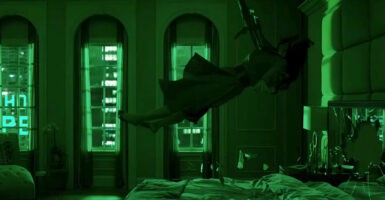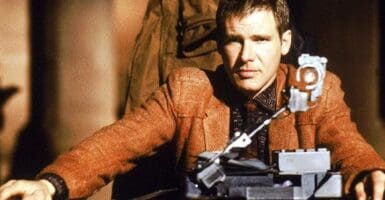The Carnival Of The Future Stars Robots
This article is more than 2 years old
 What do you expect to see at a carnival of the future? Maybe someone levitating a heavy object via the power of his mind (with a little help from an EEG)? Or someone with bionic limbs lifting 1000 pounds in each hand? Maybe some kind of alien party tricks? Regardless of what acts might invade the next iteration of Barnum and Bailey’s, one thing I think we can all agree on is that there’s going to be plenty of robots.
What do you expect to see at a carnival of the future? Maybe someone levitating a heavy object via the power of his mind (with a little help from an EEG)? Or someone with bionic limbs lifting 1000 pounds in each hand? Maybe some kind of alien party tricks? Regardless of what acts might invade the next iteration of Barnum and Bailey’s, one thing I think we can all agree on is that there’s going to be plenty of robots.
Emerge is put on by Arizona State University, and held in Phoenix. The annual event, comprised of performances and interactive exhibits, attracts artists, scientists, geeks, and robots, and is meant to urge attendees to think about their roles in the world of the future. “The future is going to be a strange place,” says co-director Ed Finn, so a carnival seems like the perfect venue to celebrate that weirdness. In addition to robots, this year’s event featured projection mapping, 3D printing, and games, and explored the theme, “The Future of Me.” While it might sound a little egoistic, the creators were trying to get participants to think about how the definition of self changes in a dynamic society, and how we as individuals can use the power we wield.
One of the stars of Emerge was Baxter, the manufacturing robot we covered just over a month ago here at GFR. Baxter is almost certainly the first robot to ever tear up the dance floor with an aerialist and clowns, though he’s not the first dancing robot we’ve featured. Arizona State’s Autonomous Systems Technologies Research & Integration Laboratory obtained Baxter a few months before the event to work on human-robot interactions in space.
Baxter then became the focus of a performance about what robots can and can’t do, and what they may be able to do in the future. Engineering students built new hands, so it could throw things, as well as an interface allowing handlers to control Baxter via iPad. The result is a pretty amazing and very weird collaboration, as well as the realization that “Humans still do ‘the robot’ better than actual robots.” I guess they’re not better than humans at everything. This might be important leverage in the future.












